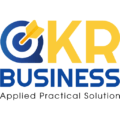CEOs of young companies are under constant pressure to grow their businesses faster and faster. And these high-growth companies have been adopting an increasingly popular goal setting system – OKR (Key Goals and Results) – to achieve the desired growth. Used by companies such as Google, Dropbox, Intel (the invention of the method), LinkedIn, Twitter, Salesforce, Oracle and many others, OKRs help companies set effective goals, tailor their teams and promote operational excellence while maximizing results across the organization and providing clear insights , based on group progress data.
You can fully keep up with the speed of how Google uses OKR by watching this video (or if you don’t have 82 minutes, you can read through this transcript). But, to have a distilled point of view, I’ve aggregated 7 of the most important and specific understandings from the video along with my own experience so you can learn the most effective ways to implement OKRs in your business.
1. OKRs are not just for technology-based companies. It’s for all kinds of companies!
You might think that OKR really only benefits large and complex organizations like Google, LinkedIn, Dropbox, etc. But, these big companies would not be in their place without OKRs. Rick Klau of Google Ventures even commented that Google was not Google before the company started using OKRs. They are a young and ambitious company looking to rapidly grow and scale up and okr methods that have given them the structure and transparency they need to achieve their goals.
2. OKRs help all teamembers match the company’s top goals and CEOs
At many companies, employees cannot know how their daily responsibilities are directly linked to the CEO’s top goals for the company. Since OKRs aim to repair the tempo link, this method is consistent with how people’s goals fit into the company’s shared mission. OKRs both layer down from the top and filter up from the bottom so that each individual contributes directly to his own set of OKRs.
3. No more than 3 goals and 3 main results at the same time
Although OKRs are useful, installing too much can be confusing and lead to deviations. Leaders must impose limits on OKRs so that employees focus on priorities. By embracing a “less than more” approach people are still motivated to accomplish their tasks. It is best to stick to no more than 5 goals and 5 main results for any quarter.
4. Regular checks and feedback (at least every two weeks)
The majority of companies that use OKRs successfully rely on regular registration between managers and their team members. These registrations help people get on track and in line with the company’s overall goals. They also hold team members accountable and keep up the pace to achieve the key results they set for the quarter. And when you think a quarter is only 13 weeks long, it’s important to accelerate and get on track.
5. Best apps for performance-oriented companies
Rick Klau mentions that Google is very attracted to OKRs because OKRs provide data. In other words, measuring the key goals and results of those goals provides specific information, which can be used by CEOs, executives, managers, and teams to assess progress and show how to achieve their goals. OKRs also create discipline and transparency. When everyone in the company knows what other goals are working for, it promotes transparency and promotes accountability, discipline and real results.
6. OKRs encourage bottom-up contributions to goals
To get money on the table and organize your team with your OKRs, make sure that at least 50% to 70% of the target comes from the bottom up. While CEOs must set top-level goals, team leaders and individuals should be allowed to propose their own set of goals that will help the company eventually achieve the CEO’s goals. This bottom-up approach not only keeps people engaged,but also helps employees understand how their responsibilities connect with company-wide goals. And, just as importantly, this method allows the CEO to harness the collective wisdom of the entire company to produce the desired result. In the end, people would go much further if they came up with a way to get there, rather than always being told what to do.
7. OKRs save your team tons of time (And create more creavity)
It sounds like weekly check-ins and above OKRs will deplete your time, but in fact, they save you a significant amount of time. Think about all the meetings you hold to discuss priorities, come up with solutions to combined issues, and allocate resources to address those issues. OKRs do all that for you – they outline priorities, prevent combined problems in the first place, and show you exactly how to allocate your resources moving forward. Then think about all the time you spend searching for updates from your team – after all, there’s no concise way to gather progress data until now.
OKRs really save you a lot of time, get you focused on strategic business decisions and plan for the future.





